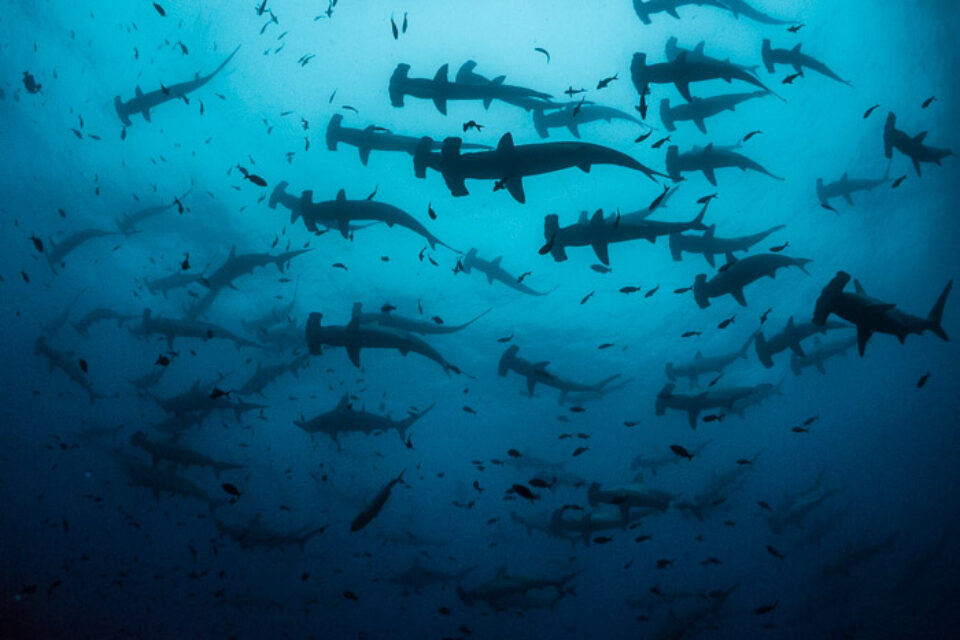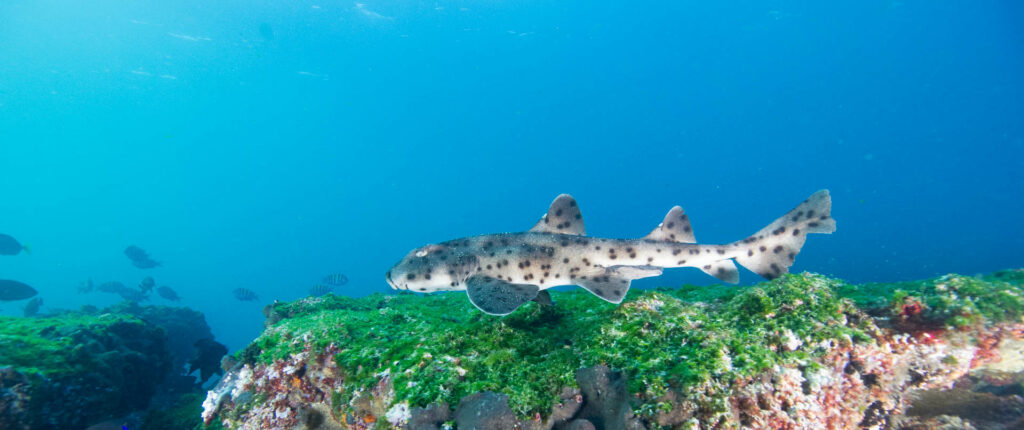
Common name:
Galapagos bullhead shark
Scientific name:
Heterodontus quoyi
Spanish name:
Tiburón gato de Galápagos
Conservation status:
Least Concern
Maximum size:
1.1 metres
Overview
The Galapagos bullhead shark is a small, inconspicuous, bottom-dwelling elasmobranch that has been present on earth since the early Jurassic period. Despite its discovery 175 years ago, the species has been almost ‘forgotten’ by science, and until recently it was assessed by the IUCN as ‘Data Deficient’. It is thought to grow up to 107cm long and inhabit flat, rocky and boulder-strewn reef areas, where it rests motionless on the bottom. The species range extends around the Galapagos Archipelago and along the Peruvian coast. However, scientists are not yet sure whether the Galapagos and Peruvian populations are the same species, with some believing the Peruvian population is a different species (Heterodontus peruanus). If this is true, it would mean that the Galapagos bullhead shark is the only endemic shark species found in Galapagos.
Unlike larger sharks, Galapagos bullheads are poor swimmers and spend much of their time sedentary, with their large pectoral fins allowing them to crawl along the sea bed. They are nocturnal, foraging only at night for shellfish, crabs and small marine invertebrates, and they regurgitate the hard shells from the prey they eat. They are also the only oviparous (egg-laying) sharks in Galapagos, laying eggs that resemble corkscrews, hidden in crevices away from predators.
Bullhead sharks in Galapagos

How you can help
Please help us conserve the endangered sharks of Galapagos by donating today or by adopting a hammerhead shark.
Read more about Galapagos bullhead sharks...


Shark Day 2018

Updates from the Galapagos Bullhead Shark Project team



